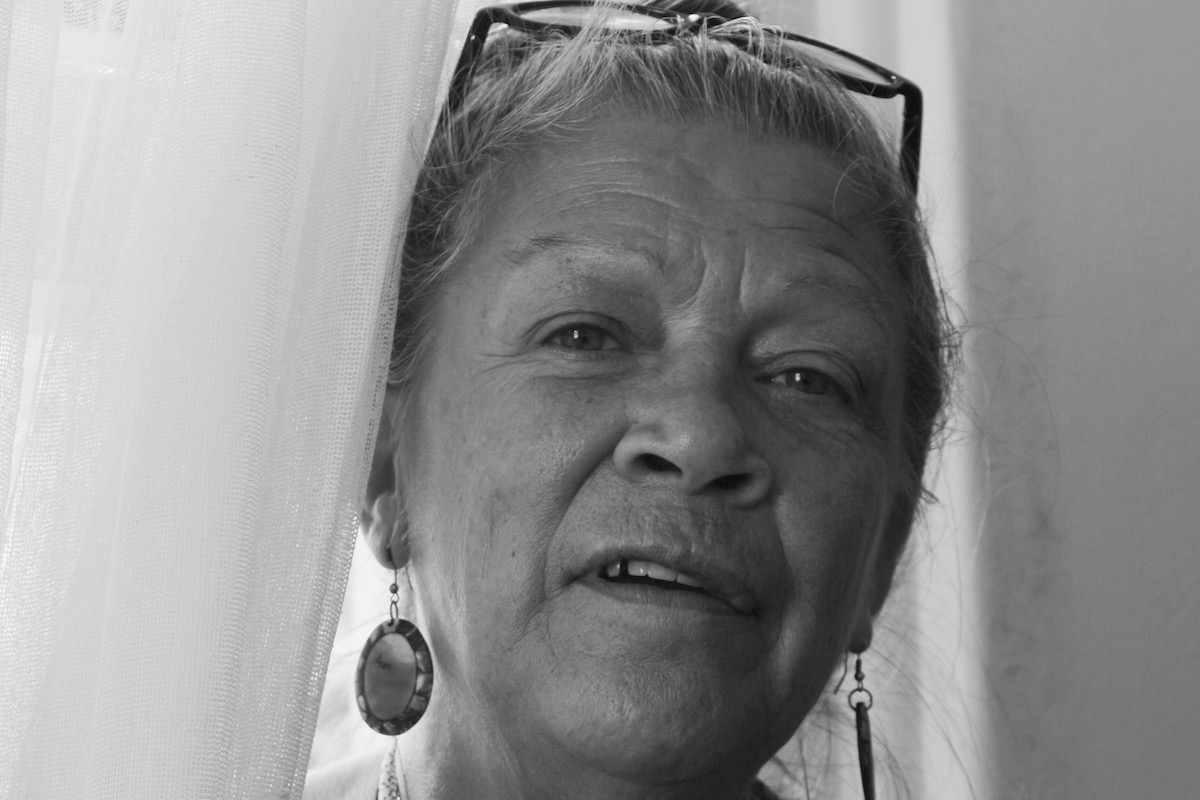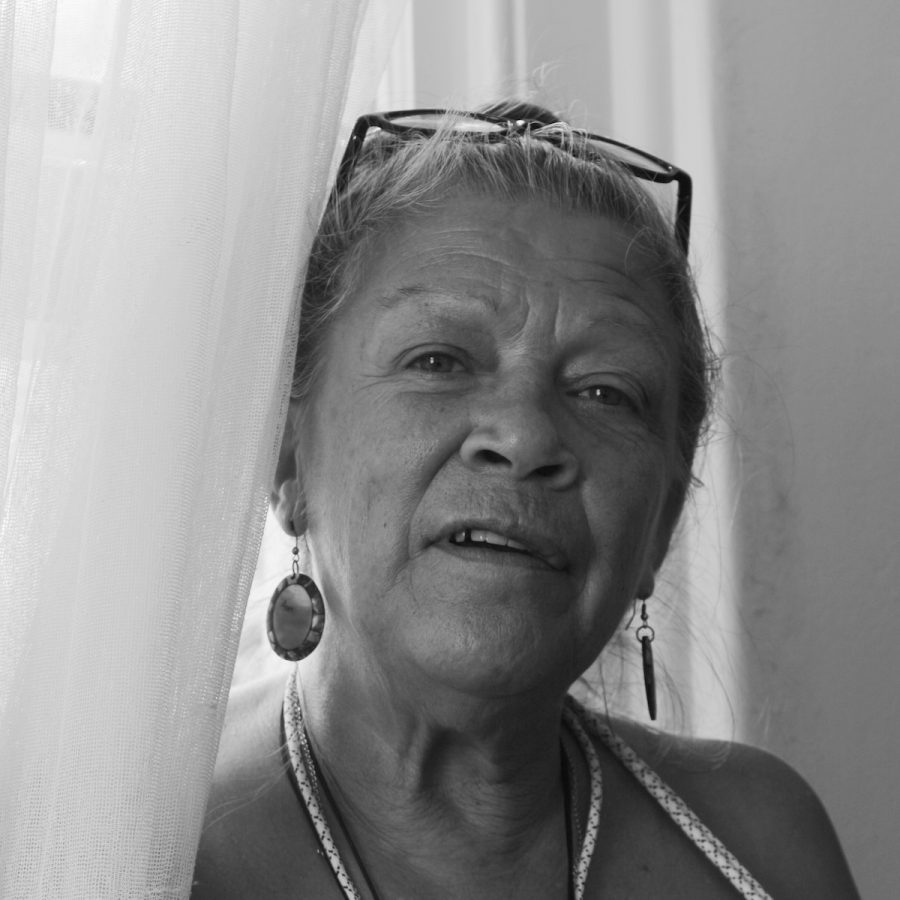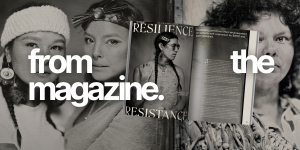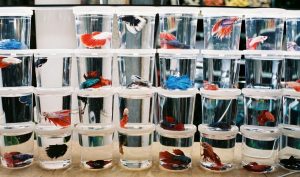Aboriginal women and the revolving door of the prison system
By: Aunty Vickie Roach

This speech was delivered by Aunty Vickie Roach during a Fund Communities not Prisons & Police rally in Naarm in October 2022. It was then published in Archer Magazine #18: the INCARCERATION issue.
All images: Charandev Singh
I am Vickie Roach, a Yuin woman with a Master’s degree in writing and, you could almost say, a PhD in the long history of the Australian prison system.
Some people say the criminal laws that are putting more and more Aboriginal women, men and children in prison in Australia are broken, but I say they are working exactly as they were designed and intended to work.
I was removed from my mother when I was two years old, charged (as a small child) with “neglect by way of destitution” and made a ward of the state.
As a child, I ran away from my foster parents several times, and was taken into custody for running away.
My removal from my mother was a product of the colonial system and its laws. My mother’s removal was also a product of the colonial system and its laws. My grandmother’s loss of her child was a product of the colonial system and its laws.
My child’s removal from me was a product of the colonial systems and its laws.
I don’t think I am different from other Aboriginal women in the criminal legal system. We are all unique in our own ways, but the way we are treated is the same.
The criminalising and targeting of me as an Aboriginal woman who uses drugs and needs to be punished, corrected and cured, is the reason I have spent years in the coloniser’s prisons.
People who use drugs and end up in prison, particularly women, are very likely to look like me and, like me, have multiple trauma stories as yet untold.
I started using when I was 13. I lived on the streets for a while there. I was probably the original street kid in the Cross. I was the one who used to sneak around at four o’clock in the morning and nick your bread and milk and your newspaper.
For a really long time it felt like we were just having fun. I knew everybody, everybody knew me, and I belonged. I was part of the fabric of the Cross. They were my people.
The thing with using is, there are a lot of problems but it also gives you purpose and a community. When you look at it, you’ve gotta go and make the money you need, like everyone else. It’s a job.
You have to work at it like it’s an actual job – a dangerous and often dirty and disgusting job. Nothing like the teacher, doctor or animal trainer you thought you wanted to be when you were a kid. But it’s the job you’ve found yourself in, and you need to do it to keep the demons at bay.
This article first appeared in Archer Magazine #18: the INCARCERATION issue. Buy it here, or purchase a digital copy here.

Survival was having enough money to keep a roof over my head and not starve and support the drug habit that numbed me enough to be able to do the things I needed to do to survive.
It starts with out-of-home care – being removed from our own families. It’s like a pipeline, a funnel. The juvenile justice system governs the lives of wards of the state. I was in adult prison by 17 years of age.
There’s this underlying ideology throughout corrections that we should suffer or be ‘corrected’.
Aboriginal women in custody are treated with varying degrees of outright hostility, physical abuse and neglect. In my experience, racism is never more clearly defined than when you’re sitting in police custody.
If you’re a wealthy white woman, you will probably be looked at by a doctor straight away and get proper medical assistance.
A user off the street would be treated far differently: they’d be lucky to see a doctor, and they’d have to wait for hours for a nurse just to give them a couple of Panadol.
For an Aboriginal woman, she might be in the same boat, but probably wouldn’t even get the Panadol, and would only see the doctor because the doctor’s there for the white woman anyway.
As an Aboriginal woman going into custody and prison, you have been through that stuff as a child as well, so it’s just an extension of the same.
When you’re in a kids’ home, you figure out pretty quickly that your own body doesn’t belong to you, it belongs to them. They can do what they like to you.
With strip-searching, so many women just disassociate from their bodies, but it’s not easy for all women to do. For a lot of women, just being strip-searched in itself will trigger so much trauma.
Even after they get dressed, they’re still shaking and it’s a traumatising experience, particularly in custody cells, because they’re rough and they’re rude and they’re arrogant and they’re personal. The guards make personal remarks about your body and shit like that.
It always made me think of us being slaves on the market getting ready to be sold, and it could be done as meanly and as roughly or as perfunctorily as they felt like, you know. It just depends.
I lost custody of my son in 1986.
The custody hearing was at the children’s court on Albion Street. It was in the same court where that same judge had sentenced me to a children’s home.
I was in the same building with the same judge who sent me to prison as a child and who was now deciding I was to lose my own child.
It took me eight years of fighting in court to get my son back.
I have been in nearly every rehab on the east coast of this country.
The best drug rehabilitation I ever had was actually for alcohol, when I lost my job. I went on compo and they sent me into this private rehab. I couldn’t believe it.
They treated us like patients, not like inmates, and we actually saw the doctor once a day. We had all sorts of activities, art, music… some were optional, some were not. Very few were mandatory.

An actual professor would come and talk to us about addiction and explain aspects of addiction to us, and even taught me things I didn’t know.
We could leave any time we wanted. The only thing was you didn’t want to come back drunk. If you came back drunk, they wouldn’t let you back in. I think it cost $30,000 for a 10-day stay.
And it wasn’t drug free. They gave me drugs and controlled the withdrawal so well that I hardly even noticed it. That was the best treatment I ever had. Rich people treatment.
All the other programs I’ve been in tell you that you’re a bad person, that you’re weak, that you’re useless and hopeless, and that you need to suffer more to learn your lesson, or some shit. They’re all about total abstinence and compliance.
They’re also usually shitholes. The food is usually shit. And because everybody is withdrawing without medical support, they’re not very pleasant places to be.
A lot of people are like “Fuck this!” and just walk out. And then they call the police, because you have broken your bail or whatever.
The thing is, you can’t force someone to stop using. It has to be their decision and on their timeline.
Our job is keeping them alive, treating their situation as a medical condition until they reach that point, and then making sure quality care is available for them when they get there.
There are a lot of barriers to getting into treatment programs, in my experience – waiting lists of six months or more in the few rehabs that remain; calling every day to see if there’s been a cancellation.
I’ve been through that process so many times. There are not enough beds, and waiting times are too long. When someone decides they want to stop, they need the help then, not to be told, “Oh, just keep using until a bed opens up.”
Getting housing made a big difference for me.
I got a job after I got housing, but you can’t get started on anything – your health, safety, wellbeing – nothing, without a house, a home, a home base.
Without permanent, secure, affordable housing, Aboriginal women become so enmeshed in the criminal justice system that they are in and out, in and out, on a regular basis for the rest of their lives.
‘Revolving door’ women often serve relatively short sentences but, even so, they lose everything they have on the outside, including all their personal possessions (clothes, photos and other sentimental mementos), accommodation, and even their children.
They have to start from scratch, every time, over and over again, with mind-numbing consistency, and have to maintain the fight to either keep their children or have their children returned to them.
My story is the continuing story of all Aboriginal women during occupation, colonisation and genocide. We are in jail for breaking a white man’s law – men who have no right to be making laws on this land at all.
Our lore is ‘first at law’, and it should have always been the dominant law in this country. Terra nullius effectively erased us so they could make their own laws and outlaw us.
It’s like we are refugees in our own country, on our own land. Hunted by coppers and racists alike, we remember how our ancestors must have felt as we live through it.
They say history is written by the victor. So be it, but let us make our story so big, so loud and so proud, we can never be written out of history.
This article first appeared in Archer Magazine #18: the INCARCERATION issue.













